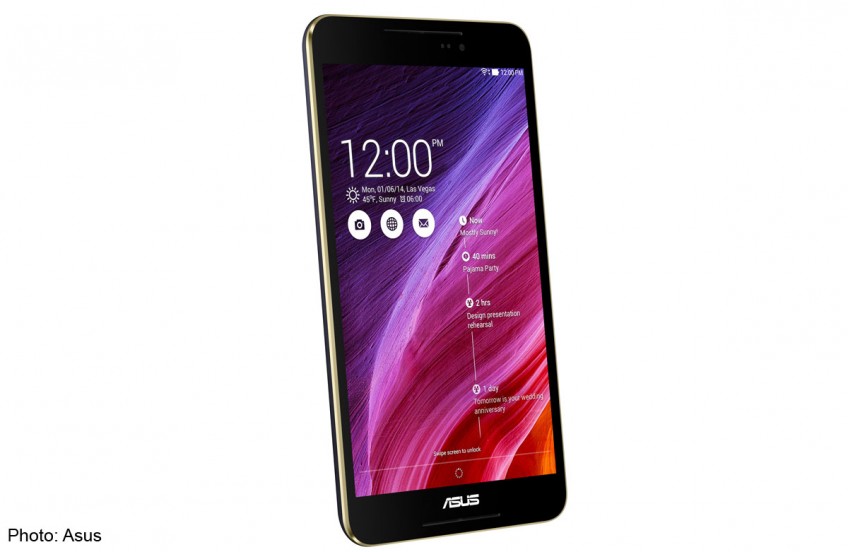Asus Fonepad 8

The Asus Fonepad is a tablet which can handle phone calls. This is not unique for an Android tablet, but this one, with an 8-inch screen, is the largest Fonepad yet.
Earlier Asus Fonepads came with a 6- or 7-inch display. Like last year's Fonepad 7, the newcomer has two micro-SIM (3G) slots, which is useful when you are travelling or if you like to keep your personal and work lives separate.
As a tablet, the Fonepad is thin and light. The chassis is plastic and solid enough to withstand my attempts to bend it. The back has a textured, soft-touch finish.
Hidden under a flap on the left are the microSD slot and the two micro-SIM slots. On the right are the volume rocker and power button. Both the micro-USB port (for charging and data) and headphone jack are at the top of the tablet.
With its slim bezel, the Fonepad 8 feels much like a 7-inch slate. I could grip it with one hand. However, using a Bluetooth headset is a must, as putting the tablet to your ear to answer a call looks silly.
The thin bezel has a major downside. I often hit the screen unintentionally with my palms while clutching the tablet. It is annoying and frustrating when this dismisses the notification shade.
Apple avoided this on the equally slim iPad mini by adding software to differentiate between the touch of a finger and a palm, but this software is absent here.
The screen is mediocre. Its 1,280 x 800-pixel resolution is low enough that you can probably spot the individual pixels. Text does not look as sharp.
On the plus side, the Asus Splendid app lets you calibrate the colour saturation and hue.
Viewing angles are good as the Fonepad has an in-plane switching display. However, the screen is reflective because its outer protective glass is not optically bonded to the display.
The Fonepad supports Miracast wireless display, so you can stream videos and games running on the tablet to a compatible TV.
The front-facing stereo speakers can be loud at maximum volume. An included Asus app lets you adjust the equaliser settings.
Taking photos with the Fonepad's 5-megapixel rear camera should be a last resort, especially when most of the new smartphones sport 8-megapixel shooters. The images I took were grainy.
Asus' ZenUI interface is visually attractive, but has its sluggish moments. For instance, the software keyboard feels laggy. It is unclear whether the processor or unoptimised software is to blame.
Battery life is excellent. The Fonepad lasted about 11 hours in our video-playback battery test.
It is far from being the best tablet, but the Fonepad is good value for money and has excellent battery stamina.
vinchang@sph.com.sg
TECH SPECS
Price: $299
Processor: Intel Atom Z3530 (1.33GHz)
RAM: 1GB
Display: 8 inches, 1,280 x 800 pixels
Camera: 5 megapixels (rear), 2 megapixels (front)
Storage: 8GB, microSD expandability up to 64GB
Battery: 4,000mAh
RATING
Features: 3/5
Design: 3/5
Performance: 3/5
Value for money: 4/5
Battery life: 5/5
Overall: 3/5

This article was first published on Nov 5, 2014.
Get a copy of Digital Life, The Straits Times or go to straitstimes.com for more stories.